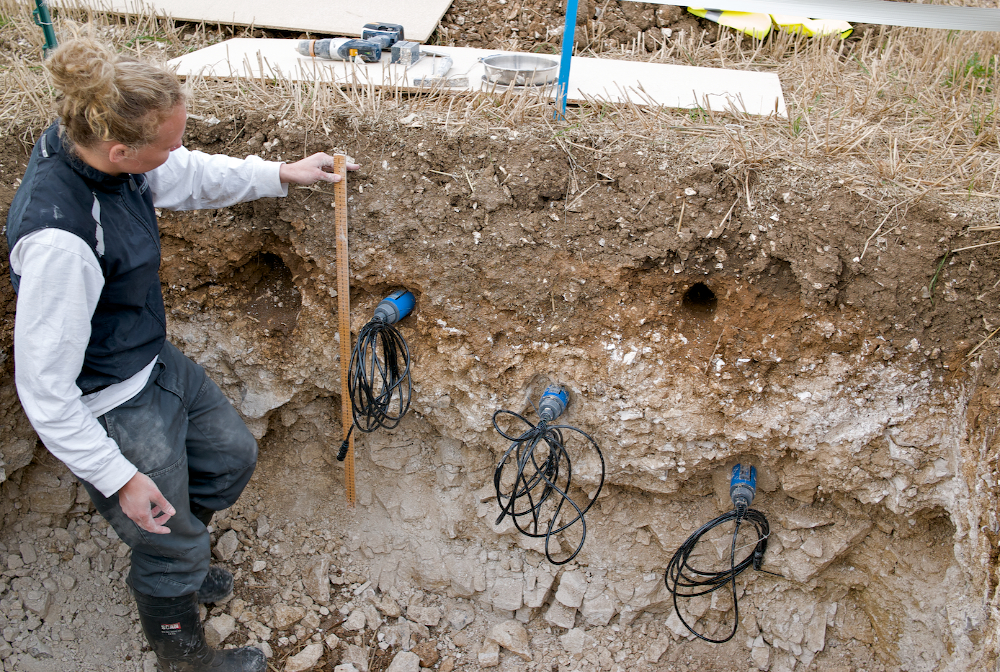

What has today’s news & convergent flow in unsaturated fractured chalk got in common?

November 22, 2012
Today the news, Twitter and TV are full of stories about floods. As I write this there are more than 76 Flood Warnings and 174 Flood Alerts on the Environment Agency website – it feels like we are sinking under the onslaught of non-stop rain following the wettest summer on record. But what, you may ask has this to do with convergent flow in unsaturated fractured chalk? Well the answer is both have a major impact on groundwater recharge and quality.
The persistent rain and consequent flooding suggests the groundwater in certain parts of the country is at a high level, saturation point in some areas. The study of convergent flow in unsaturated fractured chalk is the title of a paper written by our customer, the University of Leeds. Dawn Keim, Jared West and Noelle Odling from the Earth Surface Science Institute, School of Earth & Environment produced the paper after extensive field research which entailed setting up a network of field monitoring systems, incorporating our TDR soil moisture measurement systems and tensiometers to create modelling techniques and characterise flow processes in unsaturated chalk.
The team, over a two year period, studied soil water dynamics (soil moisture), measured rainfall and monitored subsurface tunnel inflows as well as soil sampling in three locations; taking shallow cores of 1-m length (0.45-m diameter) using a manual percussion drill and foil lined window-less sampler . Their results published in a paper entitled: Convergent Flow in Unsaturated Fractured Chalk is published by Vadose Zone Journal, the publication of the Soil Science Society of America. An abstract can be found on https://www.soils.org/publications/vzj/abstracts/0/0/vzj2011.0146 .
It seems that the results of Dawn, Jared and Noelle’s work will have implications on tracking contaminant transport and groundwater flooding because their research suggests that contaminants from the surface can rapidly reach the water table even through the thick unsaturated zones of the Chalk. Soil drainage events in response to high rainfall during periods of heavy rain could result in the rapid onset of water table rise and lead to groundwater flooding. As a result of their work we now have an improved understanding of the short time scale, flow processes and the nature of fracture controlled flow in the unsaturated zone of chalk, so we can better inform future simulations and predictions of high rainfall situations.
It was very kind of Dawn and the team to thank Vincent and Yvonne who helped with the design and installation of the soil monitoring instrumentation but the real credit here goes to the dedication and determination of the research team and the Marie Curie Initial Training network (IMVUL: Toward improved groundwater vulnerability assessment) under EU Framework 7 (Grant agreement 212298) who funded the project.
You might also be interested in...
Van Walt Guidelines for sampling for PFAS in Groundwater
November 13, 2024We need to make clear, that at the time of writing, there are no ISO or EN standards which deal with the sampling of groundwater for PFAS.
Read MoreSpot measurement v. continuous environmental monitoring
August 25, 2023Environmental monitoring has developed considerably over the years. From the time when a consultant went out monthly or quarterly with a dip tape to monitor the groundwater level in a borehole, wind forward...
Read MoreMeasuring Nitrates (NO3, NO3-N) in the field
June 20, 2023The interest in Nitrates is nothing new. One way or another we have been measuring them for half a century.
Read MoreVan Walt Environmental Equipment
A small selection of our environmental equipment